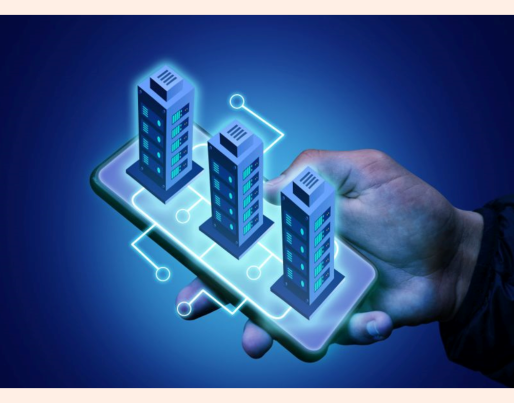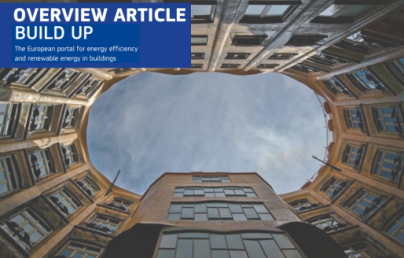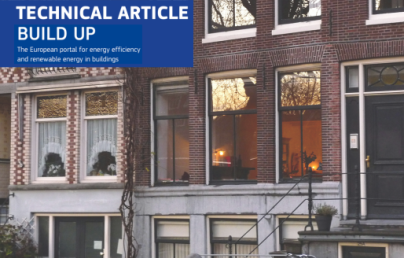Overview Article - Smart buildings and smart technologies in Europe: state of play and perspectives

Overview Article - Smart buildings and smart technologies in Europe: state of play and perspectives
(Image credits: by Freepik)
A smart building can sense, interpret, communicate, and actively respond efficiently to changing conditions, such as the operation of technical building systems, the external environment, and demands from the grid. To assess the performance of smart technologies in buildings, the Smart Readiness Indicator (SRI) has been introduced under the Energy Performance of Buildings Directive (as amended by Directive (EU) 2018/844) and established in subsequent Acts, Delegated Regulation (EU) 2020/2155 and Implementing Regulation (EU) 2020/2156. The indicator rates building’s capabilities with respect to three key functionalities: (i) optimise energy efficiency and total in-use performance, (ii) adapt operation to the needs of the occupant, and (iii) adapt to signals from the grid.
The increasing importance of smart buildings and smart technologies in achieving energy efficiency targets is reflected in the EU policy framework.
Policy context
The European Union (EU) has been actively promoting the concept of smart buildings as part of its efforts to improve energy efficiency, reduce greenhouse gas emissions, and create more sustainable urban environments. EU policies related to smart buildings primarily focus on the following key areas:
- Energy Efficiency Directive: This addresses the importance for Member States to implement smart technologies as part of their efforts to increase the energy efficiency of the integrated energy system, and thus save energy. The Directive also highlights how Member States should promote smart and sustainable technologies in efficient district heating and cooling systems, efficient heating and cooling infrastructure, and efficient smart buildings (art. 69).
- Energy Performance of Buildings Directive (EPBD): The EPBD sets the framework for the energy performance of buildings in the EU. It promotes the concept of nearly zero-energy buildings (NZEBs), which are buildings that have a very high energy performance and the low amount of energy they consume comes mostly from renewable sources. NZEBs include the use of smart technologies, such as building automation systems, IoT devices, and advanced energy management systems, which can help to optimise energy use and contribute to achieving the NZEB standards. The EPBD acknowledges the important role of smart technologies, for instance by requiring national long-term renovation strategies to include an overview of national initiatives promoting smart technologies and well-connected buildings and communities. The Smart Readiness Indicator (SRI) was also included in the 2018 revision of the Directive as an optional scheme for EU Member States.
- The Action plan to digitalise the energy system highlights the role of new technologies in facilitating the integration of renewables into the grid and thereby saving costs for consumers and companies. The Commission will boost energy services while improving the energy-efficiency of the ICT sector (e.g. enhanced consumers´ control over energy use through digital tools and services, labelling scheme for data centres, strengthened cybersecurity).
There are also EU programmes which are promoting the implementation of smart buildings and smart technologies, such as:
- Digital Europe Programme: This programme aims to accelerate the digital transformation of the EU economy. Smart buildings, especially those equipped with IoT devices and sensors, play a significant role in this digital transformation by enabling data-driven energy management and automation of various building functions.
Financial instruments for adopting smart building technologies
The EU, along with national governments and private financial institutions, has been promoting various financing mechanisms to accelerate the adoption of smart building technologies. Some examples are:
- European Structural and Investment Funds (ESIF): The EU provides funding through the ESIF to support energy efficiency projects, including those related to smart buildings. These funds are distributed to member states, and specific programs and initiatives are established at the national and regional levels to fund energy-efficient technologies.
- Horizon 2020 and Horizon Europe programmes: EU research and innovation funding programmes supporting projects related to smart buildings, energy efficiency, and sustainable technologies.
- European Regional Development Fund (ERDF): The ERDF 2021-2027 has a strong focus on ‘Smarter Europe’ and ‘Greener Europe’, thus fostering the implementation of smart technologies in buildings.
- The Recovery and Resilience Facility (RRF): This is a temporary instrument, part of the NextGenerationEU, which aims to raise funds to make them available to Member States. Member States can use these funds to develop reforms and investments to make their economies and societies more sustainable and resilient for the green and digital transition.
- LIFE Clean Energy Transition: It supports the delivery of EU policies in the field of sustainable energy, particularly the decarbonisation strategy. The programme has a budget of nearly EUR 1 billion over the period 2021-2027. Projects co-financed under this sub-programme have five different areas of interventions, among which one is related to accelerating the technology roll-out, digitalisation of buildings and enhancement of skills. Under LIFE CET, in particular, several projects are funded to support the uptake of the smart readiness indicator.
- Horizon Europe Energy: Cluster 5 (Climate, Energy and Mobility) of Horizon Europe includes, for example, several calls for projects under the efficient, sustainable and inclusive energy use Destination, which address digitalisation in buildings and construction processes.
EU-funded projects
The increasing importance of smartness is confirmed in the plethora of EU-funded projects addressing smart technologies and smart buildings. Following is a selection of relevant projects divided into different EU funding programmes:
- LIFE Clean Energy Transition sub-programme 2021-22:
- SRI-ENACT provides a holistic solution to facilitate the SRI uptake in Europe, by engaging stakeholders in the co-creation of national-tailored SRI implementations. The project aims at developing tools and services to calculate the SRI and produce policy recommendations for promoting the uptake of the SRI in EU buildings.
- EasySRI aims to enable a smooth and extendable web platform offering services for the calculation of the SRI. The project aims to introduce additional parameters that address energy efficiency and financial dimensions in view of making the acquired information more understandable and quantitative for the user of the building
- SRI2MARKET aims to improve the knowledge and capabilities of six (6) Member States (Austria, Croatia, Cyprus, France, Portugal, and Spain) with regards to the introduction of the SRI in their national regulation and market. The main objective of the project is to disseminate lessons learned from the testing phase of the Member States, and act as a catalyst for accelerating the relevant policy decisions in the Member States and making a series of tools and use cases available.
- Smart2 (Enhancing the intelligence of buildings in Europe): The project aims to develop the appropriate tools and applications to establish the intelligent assessment of EU buildings through the SRI. It will deliver a cloud-based platform for assessing smartness of buildings available in all 24 EU languages. An SRI audit will also be developed aiming to make standardised procedures, and aspects of integrating SRI in digital building logbooks will also be investigated.
- Horizon 2020 Programme:
- GreenDeal4Buildings aims to establish roundtables to implement smart financing for smart building initiatives in Czechia and Slovakia. The project will deliver eight stakeholder roadmaps and action plans to develop three project pillars: residential and non-residential buildings, industrial buildings, and smart infrastructure.
- domOS aims to take a closer look at the smart building sector by researching two axes. The first is the technology and secure connection of smart devices and smart appliances so that building owners can enforce privacy rules. The second addresses the development of smart services that increase efficiency of space heating.
- Smart2B aims to develop and deploy non-intrusive IoT sensors and actuators in existing buildings thereby improving indoor comfort and energy efficiency. The plug & play devices interact with the appliances and communicates the collected data to the cloud for remote monitoring and data analysis based on Artificial Intelligence (AI) and machine learning and control.
- PHOENIX has designed a portfolio of ICT solutions covering all aspects from hardware and software upgrades needed in legacy equipment and optimal deployment of sensors, to data analytics and services for both building users and energy utilities. A key result of the implementation process in the demo-sites is that the energy management upgrade obtained by the implementation of the PHOENIX solution, both in terms of legacy devices integration and energy services implementation, significantly increased their Smart Readiness Indicator (SRI) score.
- SmartBuilt4EU aimed at facilitating the exchange of information between EU-funded projects and national initiatives in the field of smart buildings. One of the main outcomes of the project is the establishment of the Smart Building Innovation Community. The community aims to gather industrials and research and development organisations engaged in supporting the deployment of smart buildings.
- Horizon Europe Programme:
- BuildON seeks to develop a highly replicable, generic solution to deliver intelligent building services, facilitate the integration of heterogeneous systems and technologies, and help build the next generation of smart buildings. The main objective of the project is to develop and demonstrate a Smart Transformer Toolbox to achieve an improved energy performance applicable to a broad range of building typologies and SRIs.
- EVELIXIA aims to make the EU building stock: (i) energy efficient, (ii) connected through the grids and the occupants, (iii) smart through sensors and controls, (iv) flexible to tailor energy use according to occupants´ needs.
- SMARTeeSTORY aims to develop a system to automatically detect (interacting with users via specific technologies identified in project early stages, e.g. smart home systems) the building users' archetypes (via DRL algorithms) therefore specific preferences informing optimisation and control services. This system will be deployed in three demo sites of non-residential historic buildings in Latvia, Spain and Netherlands.
The smartness sector: organisations
The smartness sector is represented by some EU leading organisations which are supporting the development of smart technologies in buildings and, specifically, from an industrial point of view. These are:
- European Association of Building Automation and Controls (eu.bac). This association is dedicated to promoting advanced building automation and control technologies in Europe, thus advancing the smart technologies for more efficient buildings.
- European Construction Technology Platform (ECTP). It brings together stakeholders from the construction industry, including companies, research institutes, and universities. They work on advancing the construction sector in Europe, including smart building technologies.
- European Institute of Innovation and Technology (EIT) Digital. They work on fostering digital technology innovation, which includes smart technologies for various applications, including buildings.
- Federation of European Heating, Ventilation, and Air Conditioning Association (REHVA). They work on implementing smart technologies specifically in relation to HVAC systems and indoor air quality in buildings.
- SmartEN (Smart Energy Europe). This European business association integrates consumer-driven solutions of the clean energy transition. In particular, they promote system efficiency, empower energy users, and drive the decarbonisation of the energy sector through the integration of renewable source and smart electrification of heating, cooling and transport.
Conclusion
In conclusion, smart buildings represent the future of sustainable, efficient, and comfortable living and working spaces. As we move forward in the era of digital transformation, the integration of cutting-edge technologies such as IoT sensors, automation systems, and advanced data analytics is reshaping our built environment. In fact, smart buildings can not only optimise energy consumption and reduce environmental impact but also enhance occupant well-being and productivity. Although the uptake of smart technologies in buildings is only in an early phase, the EU policy framework is becoming more ambitious and supportive, with e.g. the recent and ongoing revision of the Renewable Energy Directive, the Energy Efficiency Directive, and the Energy Performance of Buildings Directive.
Do you want to know more about smart buildings and Smart Readiness Indicator (SRI)? Watch our recently published Expert Talk with Paris Fokaides!


